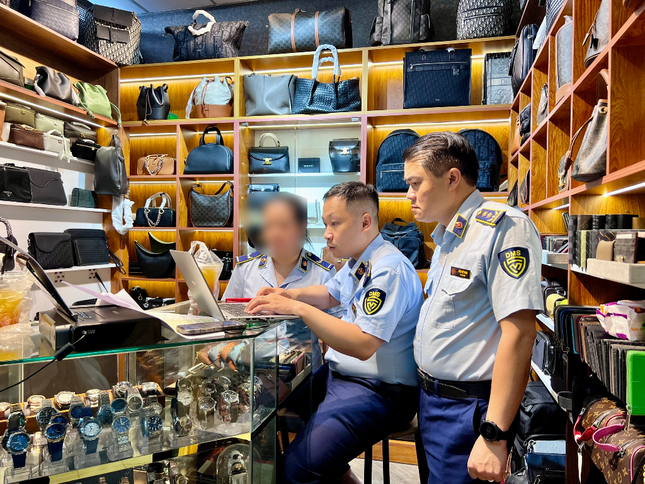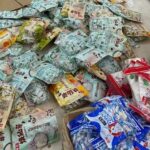On May 29th, six task forces from the Market Management Division under the Department of Domestic Market Management and Development – Ministry of Industry and Trade, simultaneously inspected several large business locations within the Saigon Square trading center in District 1, Ho Chi Minh City.
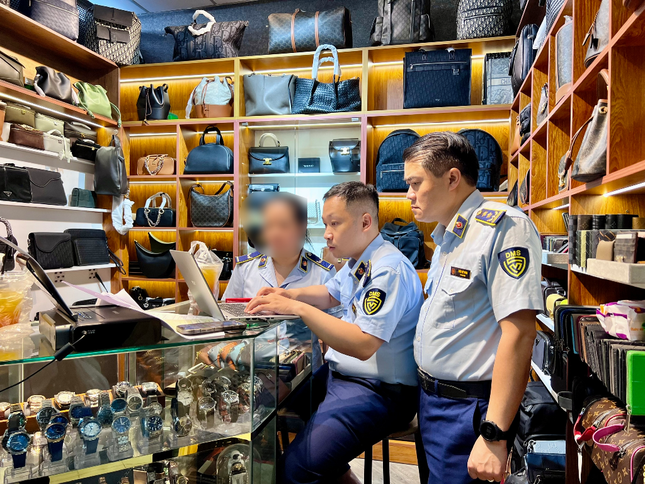
Authorities inspecting businesses in Saigon Square.
This is not the first time that market management forces have inspected businesses in Saigon Square. Previously, during an inspection in late 2024, thousands of counterfeit products of famous brands were also seized by the authorities, indicating the complexity and recurrence of violations despite multiple crackdowns.
Similar to previous inspections, the sudden appearance of the market management force caused many traders to hastily shut their stalls, obstructing the inspection process and hindering the authorities’ access and handling of violations.
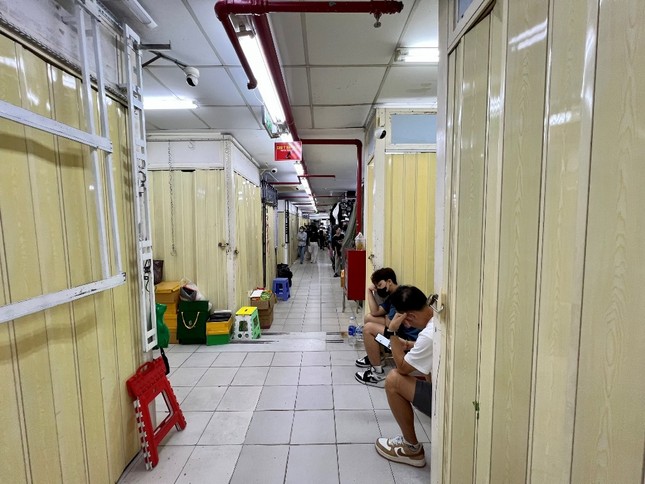
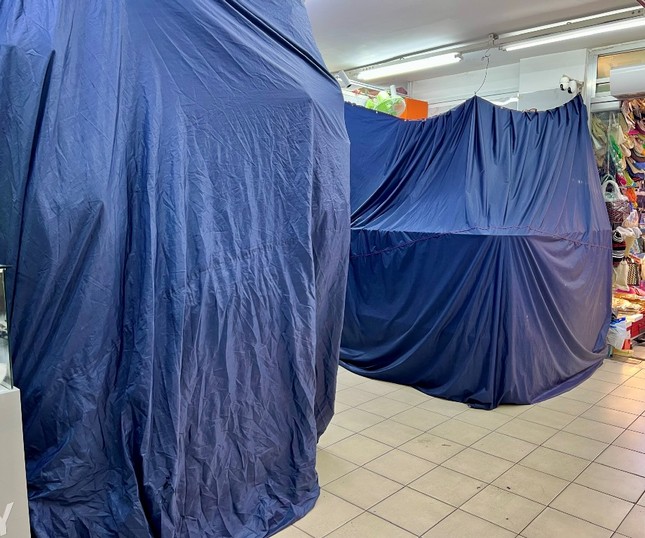
Many stalls were closed to hinder the inspection process.
However, with professional measures, the market management force quickly reached the planned locations and prevented acts of opposition and inspection avoidance by the traders.
According to observations, as soon as the inspection team appeared, the walkie-talkie system of the security team at Saigon Square was immediately “activated,” broadcasting a warning message through the internal speakers to alert traders to close their shops, creating obstacles for the inspection and handling of violations.
At the business locations, the inspection teams initially recorded a series of products on display bearing famous brand names such as Rolex, Longines, and Patek Philippe watches; handbags and wallets from LV, Gucci, Dior, YSL, Celine, Goyard, Chanel, Hermès, Bottega Veneta, and Prada; along with various models of Gucci-labeled sunglasses. However, all these products showed signs of counterfeiting, seriously affecting consumers’ rights and the reputation of protected brands in Vietnam.
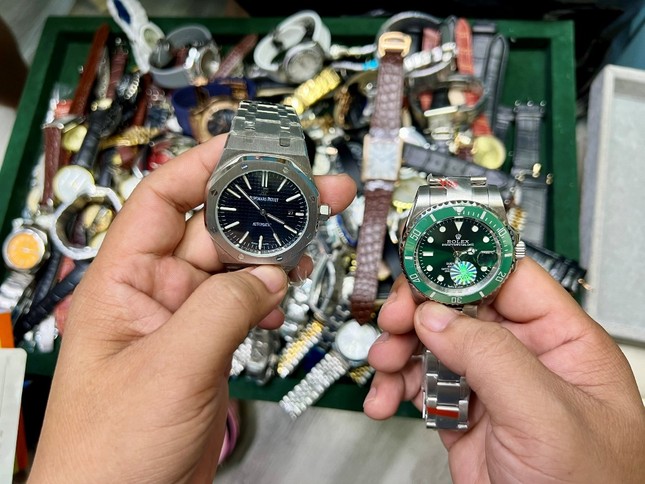
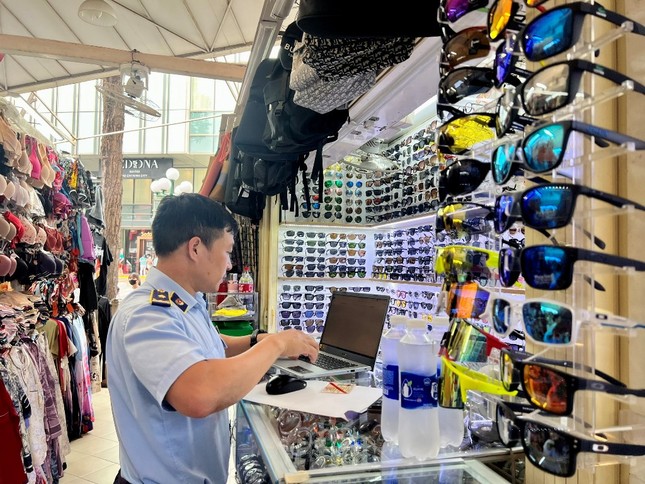
Numerous products were seized on suspicion of counterfeiting, trademark infringement, etc.
According to IPT Intellectual Property Consulting Company Limited – the representative for trademark protection of famous brands such as Rolex, BVLGARI, and Chanel – most of the products being handled by the inspection team showed signs of trademark counterfeiting. Specifically, the goods sold at some stalls had packaging that did not meet the brand’s standards, with uneven and messy stitching, and even loose threads. The logos or printed words on the products were blurred and lacked sharpness. Notably, these products were sold at much lower prices than the authentic ones.
In addition to IPT Intellectual Property Consulting Company Limited, many law firms and intellectual property law companies representing various brands were also present at Saigon Square to identify signs of infringement in the goods sold at these business establishments.
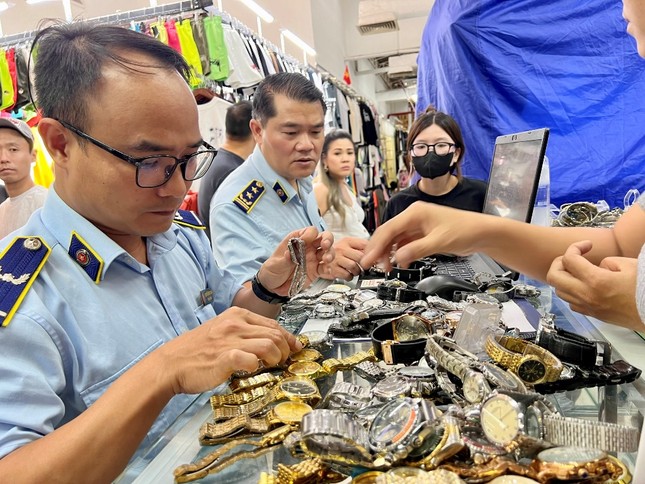
Authorities inspecting counterfeit and imitation goods at the trading center.
Due to the large volume of goods, the task forces from the Market Management Division continued to count the number of infringing goods until late at night. It is expected that the number of infringing goods will reach thousands of products.
Mr. Tran Viet Hung, Head of the Market Management Division, stated that this is one of the typical cases during the peak month of the campaign conducted by the Department of Domestic Market Management and Development. Inspections at Saigon Square will continue to be carried out by the Department in the future, as it is a central area attracting a large number of domestic and international tourists to Ho Chi Minh City.
According to Mr. Hung, the lax management of the area has not only led to violations in the trading of goods but has also damaged consumers’ trust and tarnished the image of Ho Chi Minh City. This negatively impacts the business environment for legitimate enterprises.
Saigon Square – The Stubborn Heart of Counterfeit Goods Trade in Ho Chi Minh City’s Center
Saigon Square has been subjected to multiple inspections and interventions, yet the rampant trade of counterfeit goods persists unabated.
The Magic Touch: Transforming Tons of Chinese Candy into Japanese Treats
“A savvy entrepreneur, Nguyen Viet Cuong, identified a gap in the Hanoi market for foreign-sourced products. With a keen eye for opportunity, Cuong began sourcing unidentified raw materials and repackaging them with Japanese and Korean labels to meet the demands of discerning customers.”

